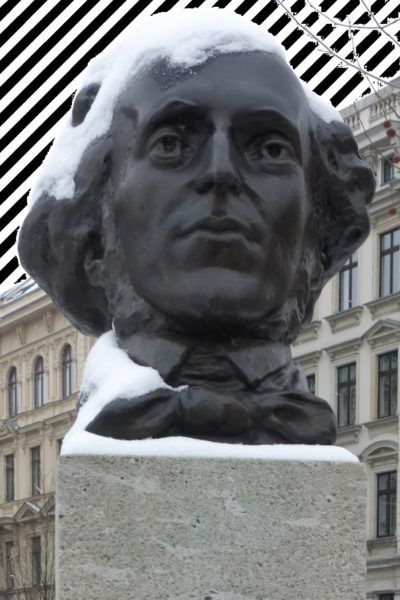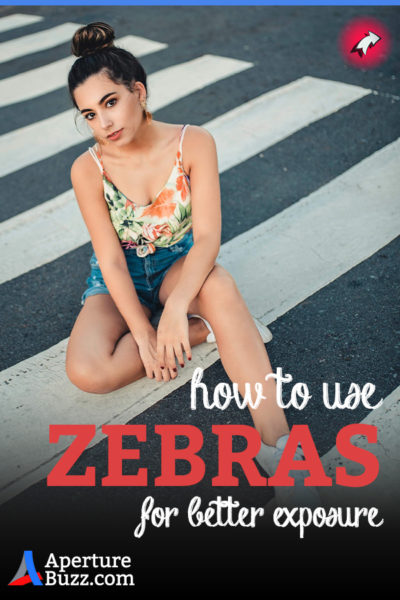Getting the exposure of an image right is one of the most important and crucial things on which the final aesthetics of an image is quite heavily depended.
Even with the ever impressive image sensors in modern cameras and their awesome optical capabilities, sometimes some images which are either over or underexposed by more than a few stops maybe completely unsalvageable.
You cannot recreate details that the camera never recorded in the first place. All you can do in post-processing is enhance or reduce some details. It is that simple.
Shooting RAW may bail you out occasionally but not always. Like everything, this margin also has a limit.
In spite of all that hangs in the balance, we, photographers, are quite happy to nearly always eyeball the exposure of an image. The most that we do is take a test shot and look it up on the back LCD. Guessing everything all the way.
Wouldn’t it be nice if there was a way to check the exposure of the image which is real-time, as unobtrusive as possible, and NOT based on pure guessing?
Well, there is. Its called the Zebras or formally, Camera Zebra Patterning.
Zebra Pattern
Although we use the term ‘Zebra’, it has got nothing to do with the herbivore animal per se. We merely use the animal’s name because the problematic areas of the image are highlighted using a black and white pattern which is easily visible and identifiable.
Let me explain.
But first, let’s get on with the definition.
Camera zebra patterning is an exposure assist tool that is used to identify and highlight areas of the image which are exposed beyond a set threshold limit. Diagonal, slanted stripes of black and white lines are overlayed over the identified parts of the image, highlighting the affected areas.
In simple words, camera zebras are used as a tool which helps avoid accidental overexposures in images and video.
Steps Involved
The application of the tool is as easy as it gets. All you have to do is activate it on your camera and set a threshold limit.
Say you set a limit of 70% (most cameras use percentage values for this). So now when you point your camera towards a scene, any area of the scene which is brighter than the 70% value you set will be highlighted using a zebra pattern overlay.
Easy enough?
Let’s go with another one.
Say you want to protect yourself from accidentally clipping the highlights of your images or video. In that case, you can theoretically set the threshold limit to 100% and keep it there.
Henceforth anytime the camera finds that a certain portion of your still image/video is getting so bright that NO detail in that area is being recorded in the camera, it will highlight that area for you and warn you against it.
If you click an image like the one above and if the zebras kick in when the threshold is set to 100%, it indicates all the parts of the sky which is currently highlighted is too bright and is being overexposed.
An easy, clear visualization of exposure. See, I told you this was easy.
Things You Should Know
- Although the stripes appear on the affected images or video, they are NOT recorded when you press the shutter button. Camera zebras merely act as a warning against potential overexposure or highlight clipping. They are NOT a solution in themselves.

- Most cameras produced in the last three years have zebra peaking built in them. In DSLRs, you have to use the back LCD to use them but in mirrorless cameras, you can use the zebras even when using the electronic viewfinder (EVF).
- You can use the zebra exposure assist for capturing BOTH still photographs and videos.
- Older Canon bodies which do not have zebra peaking built in can use a software solution called Magic Lantern to enable zebras on their existing bodies. Here is a comprehensive post which will guide you through all the process, step by step: Magic Lantern | Unlock Your Canon Camera Full Potential For Free. If you have an older Canon body and want zebras, you can definitely give this one a try.
- Most external monitors also have the zebras built in them. So if you already own one, check it to see if it has zebras. You can then connect any camera to it and instantly use the zebras even when the camera body doesn’t have the feature.
- If you are still not sold on the Zebras, nevermind, you can always use the humble Histogram for your exposure checks. It is equally as powerful and just as good at finding exposure-related problems.
So, that is all you need to know about camera zebras. Hopefully, now you are in the know about this incredible tool and how to use it to its full potential.
Give it a try then and see if you like it. If you have any further question, please post them below and I will be happy to answer them.
This is now a teeny tiny blog trying to compete with the big guys. If you liked what you read, please take a second to share it. It would help me a lot. Thank you.


